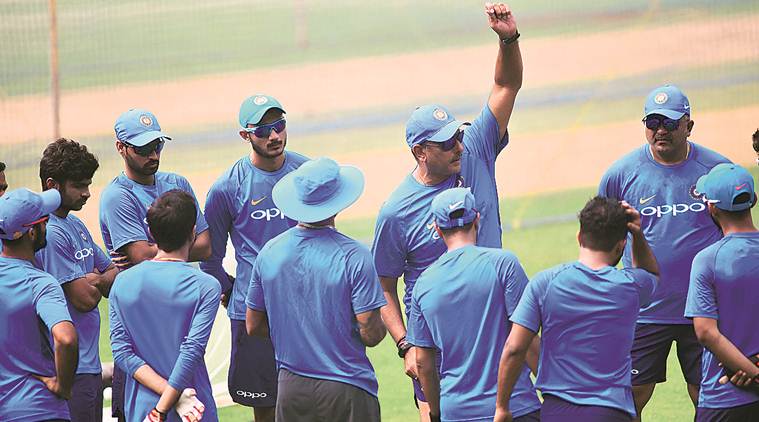
From the time the Board of Control for Cricket in India (BCCI) adopted its anti-doping rules in 2009, there has been a constant tussle between them and the National Anti Doping Agency over the jurisdiction of cricketers. NADA, which was formed in 2006, contested it had the authority to conduct dope tests on all athletes, including cricketers. The BCCI defied their claim, citing that since it did not take any funds from the government and was not a National Sports Federation – as defined by the sports ministry – it was not obliged to have its players tested by them.
These arguments have been played out over and over again. But it was only on Friday – almost after 10 years after this dispute began – that the BCCI finally agreed to come under the ambit of NADA. So what changed now?
The immediate trigger can be traced to a question in the Parliament by Shiv Sena Lok Sabha member from Mumbai, Vinayak Raut, in June. Raut asked sports minister Kiren Rijiju ‘if the sports ministry had issued directives to the BCCI on this issue and if the BCCI had defied government’s directives on dope tests.’
Rijiju took a firm stand. His statement, tabled in the Lok Sabha on June 27, read: “It (NADA) has jurisdiction over all athletes and sports associations in India. Board of Control for Cricket in India (BCCI) was apprised of this for compliance… BCCI not being a recognized Dope Testing Agency under WADA Code, its stand was not found acceptable.”
A day before, on June 26, the sports ministry had shot off a letter to BCCI CEO Rahul Johri, citing flaws in their anti-doping mechanisms and hinting at conflict of interest since the board itself tested and handed punishments to its players. Since then, Johri met sports secretary Radheyshyam Julaniya twice – first only July 9 – and then exactly a month later, on Friday.
In both meetings, the ministry did not waver in its position. It rejected BCCI’s proposal that they will allow NADA to test 10 percent of its total samples; that too of junior and under-23 players. “We made it clear that there can’t be separate laws for cricket. The government respects what BCCI has done to spread the game but the law is same for everyone,” Julaniya said.
At the same time, the BCCI claimed the ministry was pressurizing them to comply with the anti-doping code by not clearing the tours of South Africa ‘A’ and women teams. On August 6, the ministry wrote a letter to the BCCI, saying it would grant the necessary NOCs only after it gave an assurance that they would agree to comply with NADA rules. Eventually, the BCCI relented on Friday.
No RTI move
Julaniya said there wasn’t any move to bring BCCI under RTI or make them adopt the National Sports Code. Anti-doping was the only issue on agenda at the moment.
The cricket board, during the meeting with the ministry, raised three key concerns: that the samples from cricketers are collected by an agent who holds at least a graduate degree in the related field to ensure efficiency; allow them to continue using the existing doping kits, which are WADA approved; and timely adjudication in doping cases. “They wanted another testing agency to carry out tests on the players. But we refused that proposal. As per WADA rules, NADA is authorized to conduct dope tests on all players in the country,” Julaniya said.
The Supreme Court-appointed Committee of Administrators (COA) chief Vinod Rai contested this claim.
“How are we giving our cricketers to NADA? Wasn’t Prithvi Shaw’s sample tested at NADA labs? All samples over the last five years till now have had been tested only in NADA labs. It was about the competence of the professionals who will collect the sample and the quality of the testing kits. They (NADA) have agreed to be with us on both,” Rai said. “IDTM (Sweden-based International Doping Tests and Management) or similarly qualified professionals will draw the samples and in case it costs more, the BCCI will meet the costs.”
While the tug-of-war is likely to continue, Friday’s developments mean that the cricketers, like other athletes, will have to provide their year-round whereabouts to the government so that surprise out-of-competition tests can be conducted on them. Out of competition tests are considered to be the bedrock of anti doping.
In an interview to The Indian Express recently, BCCI’s anti-doping manager Dr Abhijit Salvi had said only 30 percent of the approximate 250 samples they collect every year, were out of competition testing.
NADA itself hasn’t been up to scratch on this front as it had failed to test several top Indian stars outside competition last year. Its adjudication process – one of the concerns raised by the BCCI – has not been speedy as well, there are more than 70 cases from 2018 pending before its disciplinary panel.
The sports ministry, following Friday’s meeting, may have paved the way for cricketers to come under its ambit. But it’s unlikely we’ve heard the last on this issue.